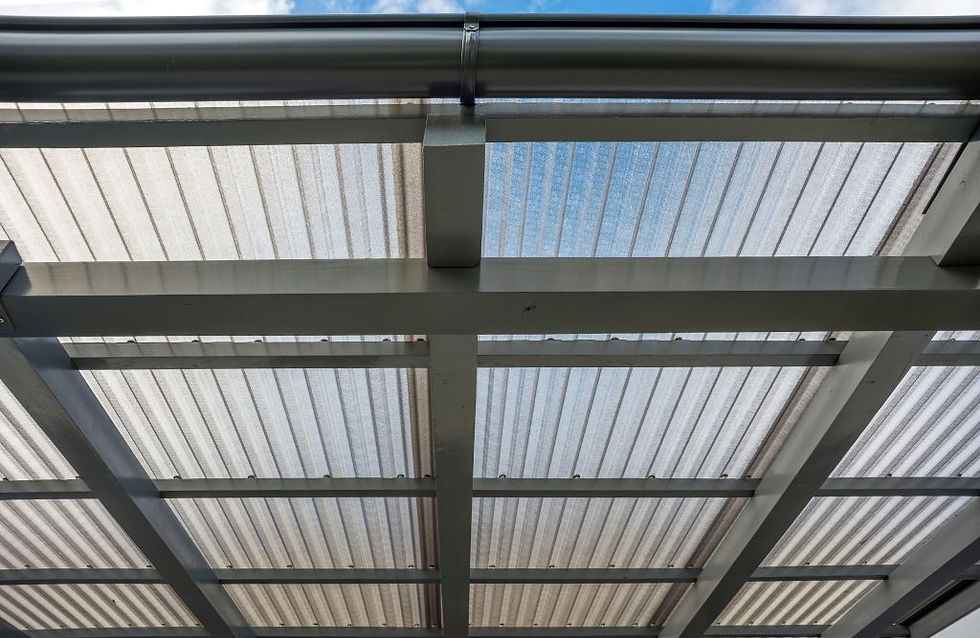The Evolution of Warehouse Pallet Racking: From Basic Shelves to Hi-Tech Modern Solutions
- Lauren Bracy
- Aug 5, 2024
- 3 min read
Updated: Mar 19
Have you ever paused to consider the quiet revolution unfolding in warehouses around the world? Yes, you heard it right. A revolution. As technology and design aesthetics increasingly blend together, even the world of warehouse storage has not been left untouched. But what was the beginning like? How have warehouse storage solutions evolved over time? If these questions stir your curiosity, this blog post is just about to get riveting. We journey through the history of pallet racking systems, from basic shelves to the complex, automated systems in use today.
For a long time, warehouses had been important cogs in the wheel of world trade. In these spaces, goods are received, stored, sorted, and dispatched. But over time, the strategies have been honed and refined, the areas optimised for performance and productiveness, and the garage answers? Well, they've undergone a transformation that would leave even the most seasoned designers and architects captivated.
This post delves into the progress of warehouse pallet racking - from humble beginnings to ultra-modern technical solutions - and highlights why this evolution matters. Buckle up, our design exploration ride begins now.
In The Beginning: Simplicity Prevailed

Once upon a time, warehouse pallet racking was less of a system and more of a basic shelving solution. These earliest storage models comprised simple, rudimentary structures put together from wood or metal. Goods were haphazardly stored, often leading to wastage of space and inefficient storage techniques.
Over the years, industrialists began to realise that they needed to maximise space utilisation within their warehouse facilities. This resulted in a shift towards planned, structured racking systems that significantly improved storage capabilities.
The transformation from basic shelves to a planned racking system was the first significant step in this evolution, and the warehouse world was never the same again.
Rise of the Racks: The 20th Century Shift
By the mid-20th century, there was another notable shift. The basic rack system evolved into adjustable pallet racking (APR) – an undeniable stepping stone in warehouse storage history. APR offered easy adjustability, maximising storage space with flexibility to accommodate various pallet sizes.
It's crucial to acknowledge how APR changed the game. By providing adaptability, more goods could be stored in the same warehouse space - a dream for any warehouse manager. But the voyage was not over, and technological advancements waited around the corner.
Automation: The 21st Century Revolution
Enter the 21st century, and with it, the arena of automated pallet storage. This marked another significant shift in the history of warehouse racking systems – from merely storing goods to managing them. Automated systems took performance to the next stage, optimising space, time, and personnel.
Inventory management systems integrated with automated racking systems have reshaped the warehouse environment. Now, storing and retrieval processes are streamlined, reducing human error, and inventory damage.
This digital era progression has revolutionised warehouse systems, marking a large stride in our evolution journey.
Advantages and Disadvantages of Modern Racking Systems
Modern pallet racking systems offer innumerable advantages. They allow efficient space utilisation, reduce labour costs, increase productivity, and enhance safety. But this doesn't mean they are devoid of drawbacks. High initial cost, reliance on electricity, and the necessity for specialised maintenance are a few disadvantages to consider.
Future of Warehouse Pallet Racking: Becoming More Autonomous

The future of warehouse pallet racking seems invigorating. The incorporation of AI and machine learning technology is already making waves, and their usage is bound to increase. With the augmentation of robotics, the world of warehouse pallet racking is set to shift from being just automated to becoming increasingly autonomous.
The Aesthetic Evolution
Finally, as we traverse through this journey, we must bring light to one often overlooked aspect of warehouse racking evolution - aesthetics. As racks evolved, so did their design. From bulky, unattractive structures, we now see sleek steel racks that are as pleasing to look at as they are practical.
Conclusion: Reflecting on the Revolution
Warehouses – once considered merely a place for storage, have evolved into technological solutions embodying efficiency and precision. The evolution of warehouse pallet racking systems narrates a fascinating tale – from rudimentary shelves to highly automated spatially efficient systems. Today, they represent a perfect blend of design practicality, aesthetics and advanced technology.
This transformation truly reveals how design and function can seamlessly combine to revolutionize a space. As autonomous technologies advance, we eagerly anticipate the next flurry of warehouse racking designs and innovations. One thing is sure; our warehouses will continue to remain silent witnesses to this relentless march towards design and technological perfection.








Comments